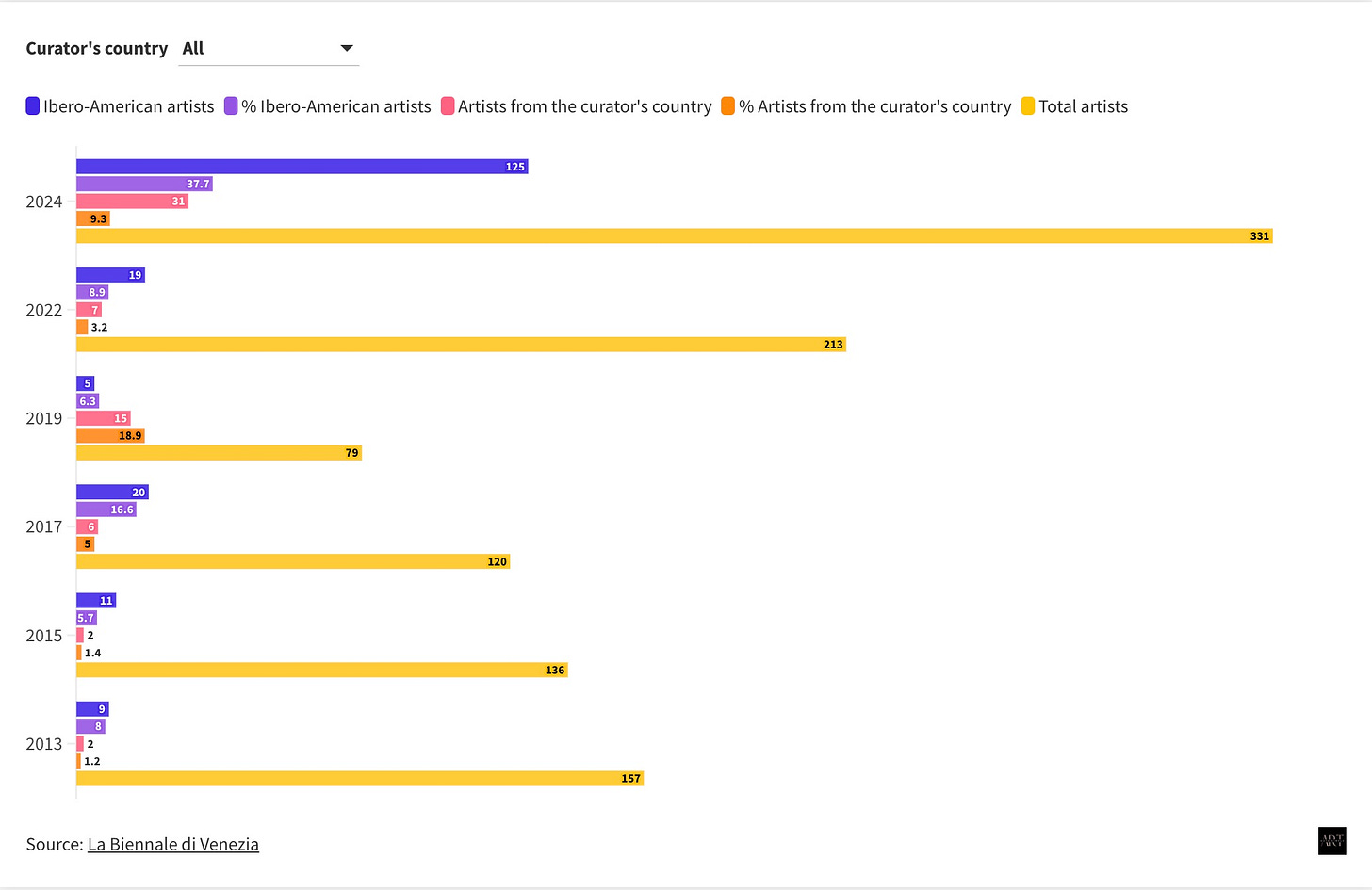Hail, Adriano, the Venice Biennale was waiting for you
Having the first Ibero-American curator in the 130 years of the Venice Biennale has been very noticeable.
The Spanish Emperor Adriano, born in Hispania, prioritized the welfare of his people and reinforced the Empire's strength. For these reasons and more, he is remembered as one of the "Five Good Emperors."
At the Venice Biennale, the oldest and most prestigious art exhibition in the world, which is about to conclude its 60th edition, has had another Adriano of Brazilian origin. He will be remembered for being the first Ibero-American curator to oversee the central exhibition in the 130-year history of the Venice Biennale.
The wait has been long, but it has definitely been worth it. Adriano Pedrosa (Rio de Janeiro, 1965), the artistic director of the Museu de Arte de São Paulo (MASP) since 2014, has seized the opportunity presented by the prestigious Venice Biennial to highlight Latin American art in the most significant way possible.
After analyzing data from the central exhibitions of the last six editions (available in the biennial archive), it is evident that the 60th edition features a remarkable presence of artists from the same region as the biennial's curatorial director. More than a third (37.7%) of the 331 artists participating in the central exhibition titled “Foreigners Everywhere” hail from Latin American countries.
Reflecting on the past, Okwui Enwezor, the esteemed Nigerian art curator and a strong advocate for African art, featured 21 African artists (including 2 from Nigeria) among the 136 participants in his 2015 exhibition, “All the World’s Future.” This represents a participation rate of 15.4%, which is 22 percentage points lower than one might expect.
The presence of artists from the curator's country of origin is also significant. Brazil is represented by just over thirty artists, making up almost 10% of the total. It is important to mention that we have included artists who are naturalized citizens and those who have developed most of their careers in Brazil. This includes the late Lina Bo Bardi and Waldemar Cordeiro, as well as active artists such as Anna Maria Maiolino, the 2024 Golden Lion winner, among others.
Only the exhibition “May You Live In Interesting Times,” curated by American Ralph Rugoff in 2019, exceeds that percentage by 10 percentage points or matches 19.3% of artists from the United States.

To view the graph and enhance your understanding, click here.
In this edition, the number of artists by region or continent is as follows: Ibero-America (including Spain) tops the list with 125 artists, followed by Asia with 74, Africa with 55, Europe with 53, North America with 20, and Oceania with 8.
On the other hand, if we compare the number of artists per country in the 60th edition, after Brazil with 31, the second place is occupied by the host, Italy, with 26; the next three are Mexico, Colombia, South Africa, and Lebanon with 16, 15, 13, and 11, respectively.
Finally, let's examine the participation of artists from 19 Ibero-American countries in the central exhibition over the last six editions. I would like to highlight a few observations based on the data analysis. Notably, only Argentina and Mexico have had representatives in all six of these exhibitions.
Since 2013, Bolivia, El Salvador, Guatemala, Panama, Paraguay, and Puerto Rico have not had any participating artists. For the 2024 edition, however, there are six artists from Bolivia, five from Guatemala, two from Panama, two from Paraguay, and one from Puerto Rico.
It is also important to note the absence of Portuguese artists. The historical connection between Brazil and Portugal cannot be overlooked. As Pedrosa highlights at the end of his introduction, “Brazil is also home to many diasporas, a land of foreigners: in addition to the Portuguese who invaded and colonized the country, it is home to the largest African, Italian, Japanese, and Lebanese diasporas in the world.”
The exhibition features outstanding representatives from these diasporas, including notable figures such as the Japanese-Brazilian artist Tomie Ohtake, as well as the aforementioned Italian-Brazilians, among others.
I am very pleased with the high level of Ibero-American participation in “Foreigners Everywhere,” as well as the strong representation from Asia and Africa. Looking at the numbers, it seems that in this edition, artists from other continents are experiencing the feeling of being foreigners more than in the past. Historically, these artists have often received more recognition during the Biennial. I hope no one accuses Adriano of favoring his home country too much!







Fantastic as usual.